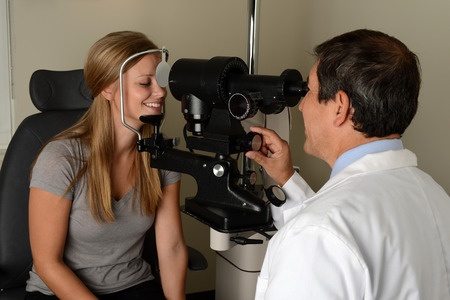 NYU Medical Center‘s concussion specialists and neuroscientists have presented a unique diagnostic device for concussion in this field of ophthalmology. It can be used in emergency room, during sports events and other medical purposes. This was based on a study which published online in a medical journal. It has utilized an unusual eye monitoring device which measures the intensity of concussions and brain injury with patients. This newly arrived technology could help to diagnose the intensity of concussion. It can also allow therapeutics and diagnostics testing and help in accessing recovery after head injury.
NYU Medical Center‘s concussion specialists and neuroscientists have presented a unique diagnostic device for concussion in this field of ophthalmology. It can be used in emergency room, during sports events and other medical purposes. This was based on a study which published online in a medical journal. It has utilized an unusual eye monitoring device which measures the intensity of concussions and brain injury with patients. This newly arrived technology could help to diagnose the intensity of concussion. It can also allow therapeutics and diagnostics testing and help in accessing recovery after head injury.
As per recent estimates, optometrist point out that 90% patients having blast injuries or concussions exhibit eye movement dysfunction. According to new studies, 75 patients that experienced trauma were tested. Participants were 18 to 60 years old and their pupils were monitored for more than 200 seconds on watching a video. Concussion is known to affect both genders across age groups. It takes place in almost every sport which increases the significance of quick and correct diagnosis. The challenges faced by physicians are diagnosis more often based upon self claimed symptoms. Dr Samadani of Cohen Veterans Centre and his team has developed a method which is reproductive, simple to perform and non evasive. Through this method, functional deficits occurring with a traumatic brain damage is assessed. It helps the physician in making a quick and correct diagnosis.
Through tracking of eye movements, function of your brain is quantitatively accessed. A new approach like this would identify the patients overlooked by centering the evaluation on subjective complaints. It provides a dimension in a physician’s ability to offer secure, quick and authentic care, believes expert Dr Ellenbogen. Cohen Veterans Centre discovered that use of such technology may also reveal edema and swelling inside the brain. It could act as a worthy biomarker for assessment of brain functions and monitoring recovery levels in individuals with injuries in head. The study came out in a journal which only focused on military veterans. The future work of Dr Samadani is aimed at replicating the technology’s diagnostic strength for large scale head injuries in ophthalmology field. It is with reference to Afghanistan and Iran veterans suffering brain injury and post concussive syndrome.
Emergency departmental visit rates for traumatic brain injures declined by 70% in a decade as per certain estimates. Presently, there isn’t a single tool recognized as high standard for diagnosis of concussions. With no structural brain damages, CT Scans and MRI imaging tests are ineffective. According to Dr Samadani, eye tracking could help in revealing when a particular patient is more affected compared to another in concussion cases. Dr Grady from University of Pennsylvania mentions that the aforementioned research study establishes a dependable marker for detection of concussion. Concussion could take place with no loss in consciousness which holds significance in military and athletic sideline evaluation. There is more work to be done to establish the specificity but signs are quite promising, expressed Dr Grady.
Author Bio: Tony Rollan provides consulting services to VSI (http://www.patternless.com). He is an author of many articles on all types of optical, ophthalmic equipment and advanced medical technology technology.
Image credit: Carlos Santa Maria
